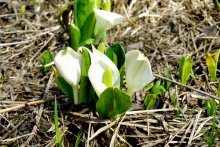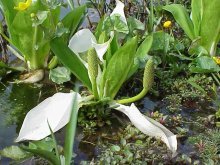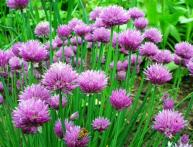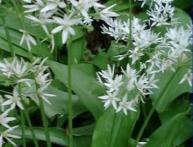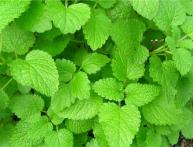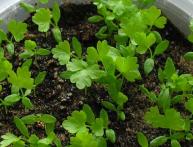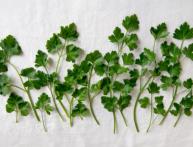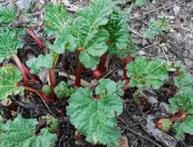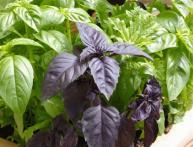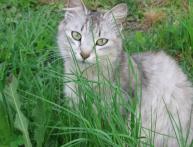Lysichiton Kamchatsky: growing features
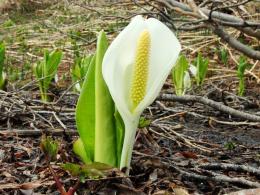
Lysichiton is an ornamental plant native to North America. The name is of Greek origin, which means “losing a cloak.” The inflorescences-cobs are surrounded by long leaves. This name is due to the fact that after flowering the inflorescence dries out and falls off. Lysichiton fits in original in landscape design and goes well with other plants.
Content:
Description of Lysichiton Kamchatka
Lysichiton belongs to the Araceae family. There are 2 types of plants: Lysychiton Kamchatka and Lysychitum American. The first type is mainly grown in Russia. Lysichiton Kamchatka grows in marshy areas. You can find the plant in Kamchatka, Sakhalin, the Kuril Islands, etc.
This is a perennial herbaceous plant that has a thick and short rhizome. Lisichiton flowers resemble calla lilies, just as large and snow-white. Flowering begins in late spring and continues almost throughout the summer. The peduncle falls off and dries out after flowering. The flowers are small in size and collected in a spadix, the length of which does not exceed 13 cm, and the width is 3-4 cm. In their place, fruits are formed. Maturation seeds celebrated at the end of summer.
Large leaves are collected in a basal rosette and grow after the inflorescences. The plate can reach 25-50 cm in length and up to 30 cm in width.The leaves are bright green in color and have an oval-elliptical shape, tapering downward. Lysichiton is not used for bouquets because of its unpleasant aroma.
The plant is winter-hardy, so it can be grown in any region of Russia.
Growing rules
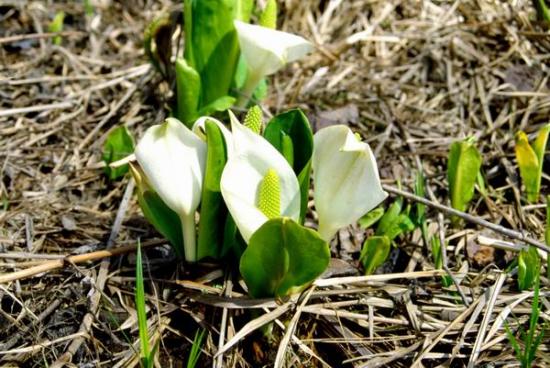
Lysichiton can grow in one place for a long time. The site for the plant must be chosen in advance and carefully. It is recommended to plant along the banks of reservoirs, in shady and semi-shaded places. In landscape design, the plant is planted along artificial ponds, deepened by 5 cm. If there is no pond nearby, then with proper care, regularly moistening the soil, the plant can also grow well.
The soil for lysichiton should be fertile and peaty. The plant reproduces by seeds. After sowing the seeds, flowering begins only after 4-5 years. Sowing of seeds is carried out in the fall. Trays are used for containers. Seedlings need to be watered regularly.
After sowing, the trays are placed in a room where the temperature will not exceed 15 degrees. With the appearance of sprouts, carry out picking into separate containers, immersing them in water. Planting in open ground is carried out after frosts, in the spring. It should be remembered that young plants are most often susceptible to attack by snails.
These pests leave behind mucus, which causes the plant to rot. In addition, they eat foliage.
You can use vinegar to get rid of slugs. Dilute 50 ml of 9% vinegar in 10 liters of water and treat the cracks where pests hide. Snails cannot tolerate the smell of sage, marjoram, and mustard. You can plant these plants next to the lysichiton, then the snails will no longer appear.
In the first years, the plant grows slowly.The speed of plant development will depend on the care of lysichiton. The plant must be watered regularly and the soil must not be allowed to dry out. Lysichiton needs to be fed throughout the summer. For this purpose, fermented grass and an infusion prepared from it are used. In terms of its qualities, it is not inferior to fertile silt.
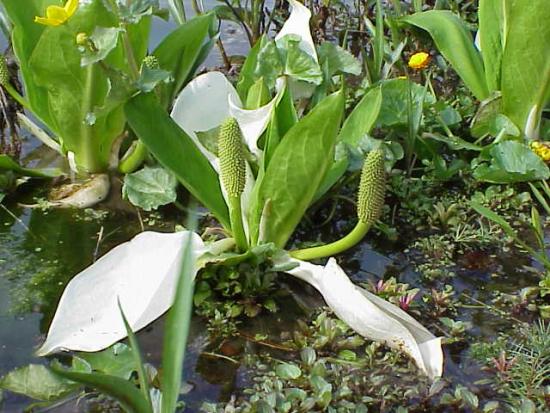
The plant should be replanted only at a young age. Division and transplant It is not advisable to carry out this treatment on an adult plant, since lysichiton tolerates these procedures very poorly.
Application of Lysichiton
The plant is considered poisonous, especially its flowers and rhizomes. These parts contain alkaloids, saponin-like substances, and glycosides. Boiled tops are used for pigs. The toxic substances contained in the plant disintegrate after hot processing. In ancient times, the rhizome of the plant was boiled and dried. Before baking the bread, it was added to flour.
In folk medicine it is mainly used rhizome lysichiton. An infusion based on Lysichiton Kamchatka is used for snake bites. Infusions of the plant's root are used for ulcers, boils and burns for rapid healing. A decoction of lysichiton root is used to cleanse the blood. The leaves of the plant can be used to make various baskets and food packaging. Thanks to the large shape of the leaves, grass can be grown close to each other.
Another species of the Araceae family, Lysichiton americana, contains calcium oxalate crystals. If the plant is consumed without treatment, it will lead to irritation of the oral mucosa, as well as the stomach. Before using plants for medicinal purposes, you should consult your doctor. Lysichiton is one of the plants that predicts the weather.If the white blanket deviates, then there will be rain, and if it is adjacent to the inflorescence, then sunny weather can be expected.
Video about Lysichiton varieties:

